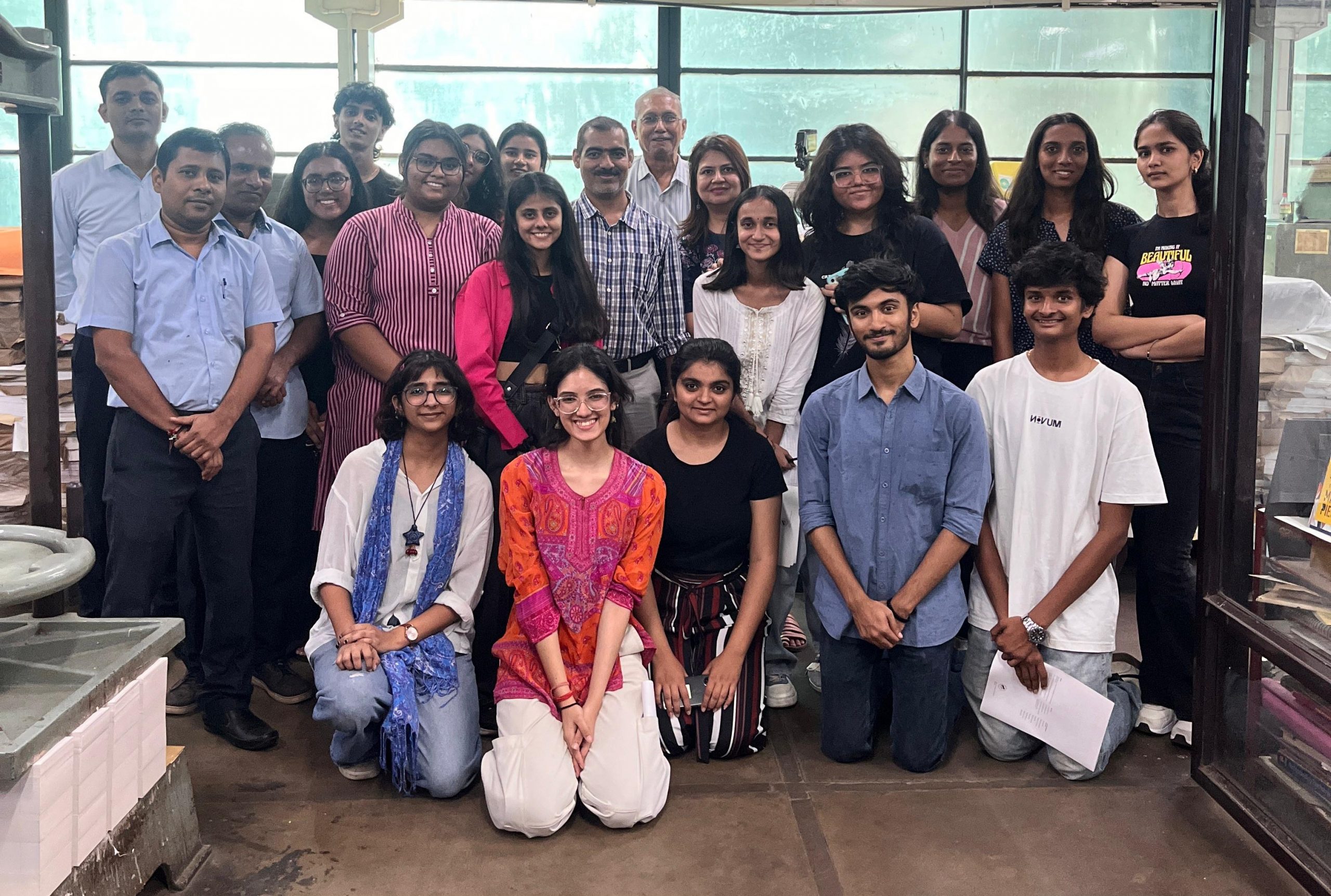
On October 18, 2024, a group of 18 students from the Institute of Design, Nirma University, accompanied by faculty members Prof Dilip Oza and Prof Kanupriya Taneja, had the exceptional opportunity to visit the renowned Print Lab at the National Institute of Design (NID). This visit was an invaluable experience, allowing students to immerse themselves in the intricate craft of letterpress printing using traditional metal type.
The guided tour and demonstrations offered by the NID Print Lab staff provided unique insights into the history and artistry of letterpress printing. Students were introduced to various aspects of the printmaking process, from setting type to observing how the press functions. They gained a tangible understanding of the heritage and craftsmanship associated with this printing method. Observing the meticulous process up close highlighted the precision and skill involved in this age-old technique, much of which remains relevant in today’s design landscape.
The experience was both enlightening and inspiring for the students, who witnessed firsthand the depth of technical and artistic expertise required in letterpress printing. The NID Print Lab stands as a testament to the preservation of traditional crafts, fostering an appreciation for the meticulous work that goes into print design.
Mr Yogesh Patil at the NID Print Lab led the students and faculty on a guided tour and screened several films illustrating the history and process of letterpress printing. The hospitable and dedicated staff provided demonstrations that made this visit a memorable and enriching experience. This exposure to letterpress printing has undoubtedly left a lasting impact on the students, enriching their educational journey and deepening their understanding of print design techniques.
The visit to the NID Print Lab allowed students to connect with the rich legacy of printmaking, empowering them with insights that will shape their creative pathways.